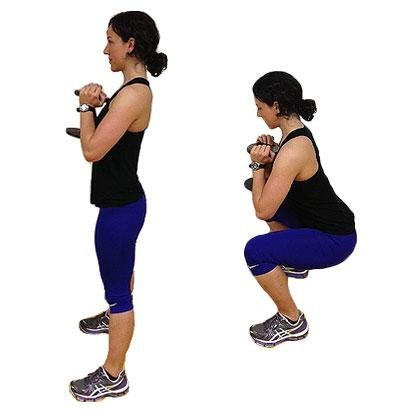By Joe Dowdell, CSCS for Shape.com
If you're short on time but still want to fit in an effective training session -- especially if your goal is fat loss -- metabolic resistance training (MRT) is tough to beat. With this training style, the goal is to maximize caloric expenditure while also increasing your metabolic rate. There are many different ways to structure an MRT session, but generally speaking, circuit training lends itself well to this approach.
Here, you'll find two different examples of the same MRT session -- one for beginners and another for intermediate/advanced trainees. Perform the workout on three non-consecutive days per week, for four weeks. It's designed to take about 25 minutes during the first two weeks and even less time after that.
More from Shape.com:
6 Moves for a Rock-Solid Stomach
15 Exercises Trainers Would Never Do
The Road Trip Routine
How it works: Beginners will perform one set of A1, rest for 30 seconds; perform one set of A2, rest for 30 seconds; perform one set of A3, and then rest 60 seconds before repeating the mini-circuit two more times. Move on to the next mini-circuit (B1-B3) and follow the same pattern. Finally, perform three straight sets of C1.
For intermediate/advanced trainees: Perform all seven exercises as a giant circuit, resting 30 seconds between moves. Once you've completed one full round, rest 90 seconds, and repeat two more times. During weeks three and four, reduce your rest period between exercises to 15 seconds. Recovery between circuits should always be 90 seconds.
You'll need: A set of dumbbells, a chin-up bar (an exercise band for assistance is recommended), a squat rack and a Swiss ball.
Choose The Right Resistance
Not sure which dumbbells to grab? A good rule of thumb when choosing resistance is to first look at the number of repetitions prescribed for any given exercise. The weight you use should allow you to perform at least the minimum number of reps (with proper form) but no more than the maximum number.
I've classified each exercise into the appropriate pattern, taking it one step further by dividing the upper-body push and pull into vertical and horizontal. Designing programs this way helps create balance between opposing muscle groups -- which oftentimes gets overshadowed by more noticeable training goals like fat loss.
Ready to get started? Click through the slideshow below to see photos of the full workout.
